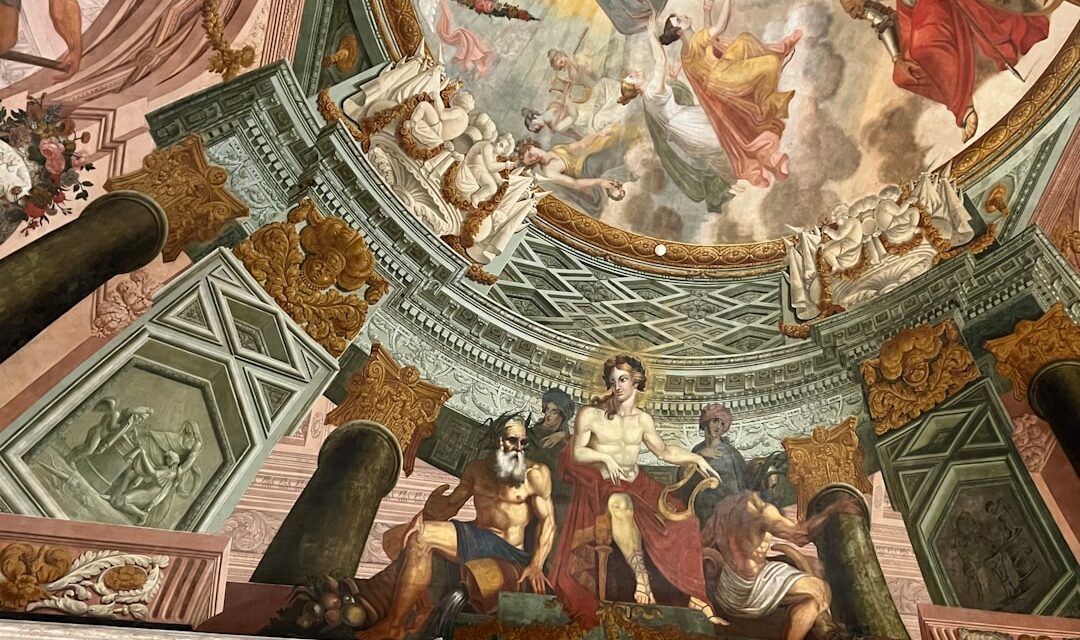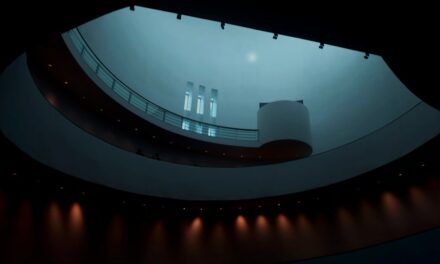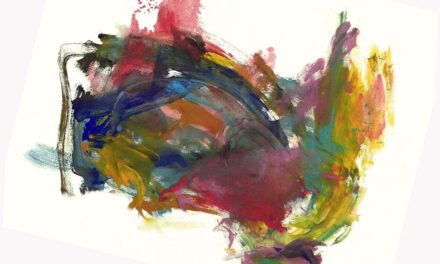Michelangelo di Lodovico Buonarroti Simoni, commonly referred to as Michelangelo, was born on 6 March 1475 in Caprese, Italy. He was the second of five sons born to Ludovico di Leonardo di Buonarotto Simoni, a magistrate, and Francesca di Neri del Miniato di Siena. Michelangelo’s family relocated to Florence during his childhood, where he cultivated his passion for art.
At the age of 13, he became an apprentice to the painter Domenico Ghirlandaio, where he acquired the techniques of fresco painting and drawing. Michelangelo’s talent was apparent from an early age, and he soon caught the attention of Lorenzo de’ Medici, the ruler of Florence, who invited him to reside in his palace and study classical sculpture in the Medici gardens. During this period, Michelangelo developed a profound appreciation for the human form and the classical ideals of beauty and proportion.
His early education in art and exposure to the classical world would significantly influence his artistic style and subject matter throughout his career. Michelangelo’s education extended beyond the arts; he also harboured a keen interest in literature and poetry. He was an avid reader and possessed a comprehensive knowledge of classical literature, which he frequently drew upon for inspiration in his work.
His early education and exposure to the rich cultural environment of Florence established the foundation for his future success as one of the most renowned artists of the Italian Renaissance.
Summary
- Early Life and Education: Michelangelo was born in 1475 in Caprese, Italy, and showed an early talent for art. He studied under the patronage of Lorenzo de’ Medici and received formal training in sculpture.
- Artistic Style and Influences: Michelangelo’s style was influenced by classical Greek and Roman art, as well as the humanist philosophy of the Renaissance. He was known for his use of muscular figures and dramatic, emotional expression.
- Major Works and Commissions: Some of Michelangelo’s major works include the Pieta, David, and the design of the dome of St. Peter’s Basilica in Rome. He also received commissions from various popes, including the painting of the Sistine Chapel ceiling.
- The Sistine Chapel Ceiling: Michelangelo spent four years painting the Sistine Chapel ceiling, depicting scenes from the Book of Genesis. The work is considered one of the greatest achievements in Western art.
- Sculptures and Architectural Designs: In addition to his paintings, Michelangelo was also a renowned sculptor, creating masterpieces such as the statue of David. He also contributed to architectural designs, including the Laurentian Library in Florence.
- Legacy and Impact on Art: Michelangelo’s work had a profound impact on the development of Western art, influencing generations of artists. His emphasis on the human form and emotional expression set new standards for artistic achievement.
- Controversies and Personal Life: Michelangelo was known for his fiery temper and often clashed with his patrons. He also led a solitary and austere personal life, dedicated to his art and religious beliefs.
Artistic Style and Influences
Influence of Ancient Rome
One of Michelangelo’s greatest influences was the ancient Roman sculptor, Phidias, whose work he studied and admired. Phidias’ emphasis on naturalism and idealised beauty had a profound impact on Michelangelo’s own approach to sculpture.
Contemporary Inspirations
Another important influence on Michelangelo’s style was the work of his contemporary, Leonardo da Vinci. Although their artistic styles differed significantly, Michelangelo admired Leonardo’s mastery of anatomy and his ability to capture the subtleties of human expression.
Spirituality and Faith
Michelangelo’s artistic style was also shaped by his religious beliefs and his deep spirituality. His work often reflected his profound faith and his belief in the divine nature of art. This spiritual dimension is evident in many of his most famous works, such as the Sistine Chapel ceiling and the Pieta. Michelangelo’s unique blend of classical ideals, religious fervour, and technical mastery set him apart as one of the most influential artists of the Renaissance.
Major Works and Commissions

Throughout his career, Michelangelo received numerous commissions from wealthy patrons, religious institutions, and political leaders. One of his earliest major works was the Pieta, a marble sculpture depicting the Virgin Mary cradling the body of Jesus after the crucifixion. The Pieta was commissioned by a French cardinal for St.
Peter’s Basilica in Rome and is considered one of Michelangelo’s greatest masterpieces. Another significant commission came from Pope Julius II, who asked Michelangelo to create a monumental tomb for him in St. Peter’s Basilica.
Although the project was never completed according to Michelangelo’s original design, it provided him with an opportunity to showcase his skill as a sculptor and architect. The tomb includes several larger-than-life statues, including the famous statue of Moses, which is admired for its powerful expression and intricate detail. In addition to his sculptures, Michelangelo also completed several important paintings during his lifetime.
One of his most famous works is the ceiling of the Sistine Chapel, which he was commissioned to paint by Pope Julius
The Sistine Chapel Ceiling
The Sistine Chapel ceiling is one of Michelangelo’s most famous and enduring achievements. The project was commissioned by Pope Julius II in 1508 and took four years to complete. The ceiling is adorned with nine scenes from the Book of Genesis, including the iconic depiction of God creating Adam with outstretched arms.
The frescoes are renowned for their vibrant colours, intricate detail, and dramatic composition. The Sistine Chapel ceiling is a testament to Michelangelo’s unparalleled skill as a painter and his ability to capture complex narratives within a single composition. The frescoes are filled with dynamic figures and expressive gestures that convey a sense of movement and emotion.
The ceiling is also notable for its innovative use of perspective and foreshortening, which creates a sense of depth and three-dimensionality. The Sistine Chapel ceiling is not only a masterpiece of artistic technique but also a profound expression of Michelangelo’s religious faith and spiritual beliefs. The frescoes are filled with symbolism and allegory, reflecting Michelangelo’s deep understanding of Christian theology and his desire to convey profound spiritual truths through his art.
The Sistine Chapel ceiling remains one of the most visited and revered works of art in the world, attracting millions of visitors each year to marvel at its beauty and significance.
Sculptures and Architectural Designs
Renowned Sculptures
One of his most famous sculptures is the David, a colossal marble statue depicting the biblical hero standing triumphantly after defeating Goliath. The statue is admired for its idealised proportions and its sense of dynamic movement, capturing David in a moment of intense concentration before battle.
Architectural Masterpieces
Michelangelo also completed several architectural projects during his lifetime, including the design of St Peter’s Basilica in Rome. He was appointed as chief architect in 1546 and worked on the project until his death in 1564. Although much of his original design was altered by subsequent architects, Michelangelo’s influence is still evident in the overall layout and grandeur of the basilica.
The Medici Chapel
One of Michelangelo’s most ambitious architectural projects was the construction of the Medici Chapel in Florence. The chapel houses several tombs for members of the Medici family, including the famous statues of Night and Day, Dawn and Dusk. These sculptures are admired for their emotional intensity and their exquisite detail, reflecting Michelangelo’s ability to imbue stone with a sense of life and movement.
Legacy and Impact on Art

Michelangelo’s impact on art cannot be overstated; he is widely regarded as one of the greatest artists in history and a key figure in the Italian Renaissance. His innovative approach to sculpture, painting, and architecture set new standards for artistic achievement and inspired generations of artists to come. One of Michelangelo’s most enduring legacies is his emphasis on the human form as a vehicle for expressing emotion and spirituality.
His sculptures are celebrated for their naturalism and their ability to convey a sense of inner life within the stone. His paintings are admired for their dramatic composition and their ability to capture complex narratives within a single image. Michelangelo’s influence extended far beyond his own lifetime; artists such as Raphael, Titian, and Caravaggio were all deeply influenced by his work.
His legacy also had a profound impact on later movements such as Mannerism and Baroque art, which sought to emulate his grandeur and emotional intensity.
Controversies and Personal Life
Despite his immense talent and artistic achievements, Michelangelo’s personal life was marked by controversy and conflict. He was known for his fiery temper and often clashed with patrons, colleagues, and even members of his own family. His difficult personality sometimes led to strained relationships with those around him, but it also reflected his uncompromising dedication to his art.
Michelangelo’s personal life was also marked by periods of intense introspection and spiritual struggle. He was deeply religious and often grappled with questions of faith and morality in his work. His poetry reveals a complex inner world filled with doubt, longing, and a deep sense of existential angst.
In conclusion, Michelangelo’s impact on art history is immeasurable; his innovative approach to sculpture, painting, and architecture set new standards for artistic achievement and inspired generations of artists to come. His legacy continues to resonate today through his enduring masterpieces and his profound influence on subsequent movements in art history. Despite the controversies surrounding his personal life, Michelangelo’s artistic genius remains undiminished, securing his place as one of the greatest artists of all time.
If you are interested in learning more about the art movements that followed Michelangelo Buonarroti’s time, you may want to read about Post-Impressionism. This movement, which emerged in the late 19th century, sought to expand upon the ideas of Impressionism and explore new ways of representing reality through art. To delve deeper into this fascinating period in art history, check out the article on Post-Impressionism here.
FAQs
Who was Michelangelo Buonarroti?
Michelangelo Buonarroti (1475-1564) was an Italian sculptor, painter, architect, and poet of the High Renaissance. He is widely regarded as one of the greatest artists of all time.
What are Michelangelo’s most famous works?
Michelangelo’s most famous works include the statue of David, the Sistine Chapel ceiling, the Pieta, and the dome of St. Peter’s Basilica in Rome.
What was Michelangelo’s style of art?
Michelangelo’s style of art is characterized by its grandeur, emotional intensity, and anatomical accuracy. He was known for his mastery of the human form and his ability to convey powerful emotions through his work.
What was Michelangelo’s contribution to art and architecture?
Michelangelo made significant contributions to both art and architecture. His work had a profound impact on the development of Western art, and he is considered a key figure in the history of both disciplines.
What was Michelangelo’s impact on the Renaissance period?
Michelangelo’s work played a crucial role in shaping the artistic and cultural landscape of the Renaissance period. His innovative approach to art and his dedication to perfection set new standards for artists of his time and beyond.




